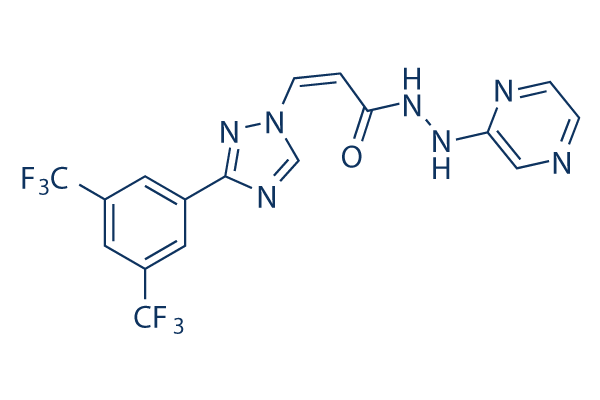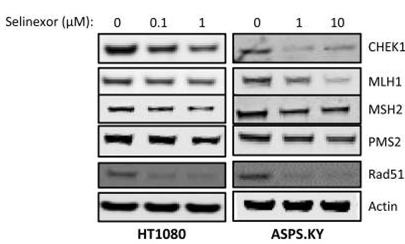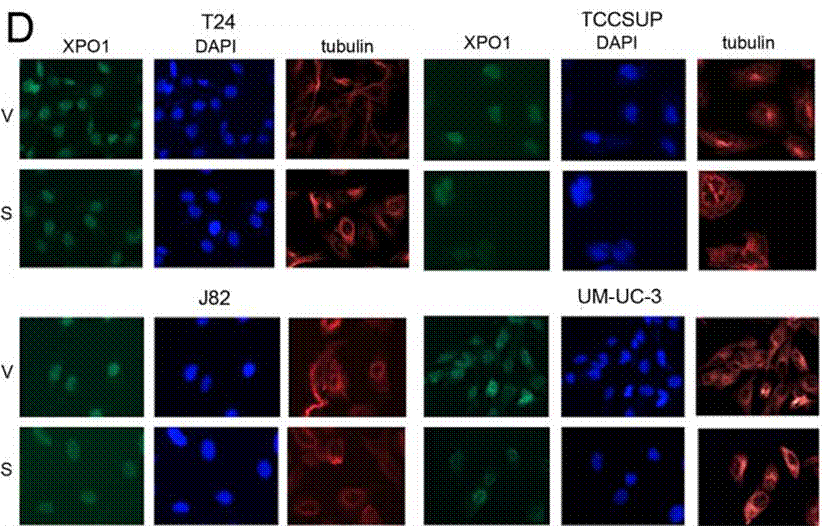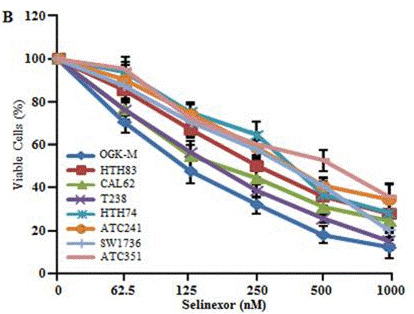
- Bioactive Compounds
- By Signaling Pathways
- PI3K/Akt/mTOR
- Epigenetics
- Methylation
- Immunology & Inflammation
- Protein Tyrosine Kinase
- Angiogenesis
- Apoptosis
- Autophagy
- ER stress & UPR
- JAK/STAT
- MAPK
- Cytoskeletal Signaling
- Cell Cycle
- TGF-beta/Smad
- DNA Damage/DNA Repair
- Compound Libraries
- Popular Compound Libraries
- Customize Library
- Clinical and FDA-approved Related
- Bioactive Compound Libraries
- Inhibitor Related
- Natural Product Related
- Metabolism Related
- Cell Death Related
- By Signaling Pathway
- By Disease
- Anti-infection and Antiviral Related
- Neuronal and Immunology Related
- Fragment and Covalent Related
- FDA-approved Drug Library
- FDA-approved & Passed Phase I Drug Library
- Preclinical/Clinical Compound Library
- Bioactive Compound Library-I
- Bioactive Compound Library-Ⅱ
- Kinase Inhibitor Library
- Express-Pick Library
- Natural Product Library
- Human Endogenous Metabolite Compound Library
- Alkaloid Compound LibraryNew
- Angiogenesis Related compound Library
- Anti-Aging Compound Library
- Anti-alzheimer Disease Compound Library
- Antibiotics compound Library
- Anti-cancer Compound Library
- Anti-cancer Compound Library-Ⅱ
- Anti-cancer Metabolism Compound Library
- Anti-Cardiovascular Disease Compound Library
- Anti-diabetic Compound Library
- Anti-infection Compound Library
- Antioxidant Compound Library
- Anti-parasitic Compound Library
- Antiviral Compound Library
- Apoptosis Compound Library
- Autophagy Compound Library
- Calcium Channel Blocker LibraryNew
- Cambridge Cancer Compound Library
- Carbohydrate Metabolism Compound LibraryNew
- Cell Cycle compound library
- CNS-Penetrant Compound Library
- Covalent Inhibitor Library
- Cytokine Inhibitor LibraryNew
- Cytoskeletal Signaling Pathway Compound Library
- DNA Damage/DNA Repair compound Library
- Drug-like Compound Library
- Endoplasmic Reticulum Stress Compound Library
- Epigenetics Compound Library
- Exosome Secretion Related Compound LibraryNew
- FDA-approved Anticancer Drug LibraryNew
- Ferroptosis Compound Library
- Flavonoid Compound Library
- Fragment Library
- Glutamine Metabolism Compound Library
- Glycolysis Compound Library
- GPCR Compound Library
- Gut Microbial Metabolite Library
- HIF-1 Signaling Pathway Compound Library
- Highly Selective Inhibitor Library
- Histone modification compound library
- HTS Library for Drug Discovery
- Human Hormone Related Compound LibraryNew
- Human Transcription Factor Compound LibraryNew
- Immunology/Inflammation Compound Library
- Inhibitor Library
- Ion Channel Ligand Library
- JAK/STAT compound library
- Lipid Metabolism Compound LibraryNew
- Macrocyclic Compound Library
- MAPK Inhibitor Library
- Medicine Food Homology Compound Library
- Metabolism Compound Library
- Methylation Compound Library
- Mouse Metabolite Compound LibraryNew
- Natural Organic Compound Library
- Neuronal Signaling Compound Library
- NF-κB Signaling Compound Library
- Nucleoside Analogue Library
- Obesity Compound Library
- Oxidative Stress Compound LibraryNew
- Plant Extract Library
- Phenotypic Screening Library
- PI3K/Akt Inhibitor Library
- Protease Inhibitor Library
- Protein-protein Interaction Inhibitor Library
- Pyroptosis Compound Library
- Small Molecule Immuno-Oncology Compound Library
- Mitochondria-Targeted Compound LibraryNew
- Stem Cell Differentiation Compound LibraryNew
- Stem Cell Signaling Compound Library
- Natural Phenol Compound LibraryNew
- Natural Terpenoid Compound LibraryNew
- TGF-beta/Smad compound library
- Traditional Chinese Medicine Library
- Tyrosine Kinase Inhibitor Library
- Ubiquitination Compound Library
-
Cherry Picking
You can personalize your library with chemicals from within Selleck's inventory. Build the right library for your research endeavors by choosing from compounds in all of our available libraries.
Please contact us at info@selleckchem.com to customize your library.
You could select:
- Antibodies
- Bioreagents
- qPCR
- 2x SYBR Green qPCR Master Mix
- 2x SYBR Green qPCR Master Mix(Low ROX)
- 2x SYBR Green qPCR Master Mix(High ROX)
- Protein Assay
- Protein A/G Magnetic Beads for IP
- Anti-Flag magnetic beads
- Anti-Flag Affinity Gel
- Anti-Myc magnetic beads
- Anti-HA magnetic beads
- Poly DYKDDDDK Tag Peptide lyophilized powder
- Protease Inhibitor Cocktail
- Protease Inhibitor Cocktail (EDTA-Free, 100X in DMSO)
- Phosphatase Inhibitor Cocktail (2 Tubes, 100X)
- Cell Biology
- Cell Counting Kit-8 (CCK-8)
- Animal Experiment
- Mouse Direct PCR Kit (For Genotyping)
- New Products
- Contact Us
research use only
Selinexor (KPT-330) CRM1 inhibitor
Selinexor (KPT-330, ATG-010) is an orally bioavailable selective CRM1 inhibitor. Phase 2.

Chemical Structure
Molecular Weight: 443.31
Purity & Quality Control
Batch:
Purity:
99.74%
99.74
Related Products
| Related Products | Eltanexor (KPT-8602) KPT-185 Verdinexor (KPT-335) KPT-276 | Click to Expand |
|---|---|---|
| Related Compound Libraries | FDA-approved Drug Library Natural Product Library Ion Channel Ligand Library Exosome Secretion Related Compound Library Calcium Channel Blocker Library | Click to Expand |
Cell Culture and Working Concentration
| Cell Lines | Assay Type | Concentration | Incubation Time | Formulation | Activity Description | PMID |
|---|---|---|---|---|---|---|
| BT474 cells | Function assay | 0.1 μM | 24 h or 48 h | induces differential Akt signaling- and metabolism-associated gene expression profiles. | 30987380 | |
| MCF-7 | Function assay | 0.1 μM | 24 h or 48 h | induces differential Akt signaling- and metabolism-associated gene expression profiles. | 30987380 | |
| THP-1 | Function assay | 24 h | Cleavage of PARP and caspase 3 were strongly enhanced in the combination treatment when compared to ABT-199 or KPT-330 alone | 30596398 | ||
| OCI-AML3 | Function assay | 24 h | Cleavage of PARP and caspase 3 were strongly enhanced in the combination treatment when compared to ABT-199 or KPT-330 alone | 30596398 | ||
| MV4-11 | Function assay | 24 h | Cleavage of PARP and caspase 3 were strongly enhanced in the combination treatment when compared to ABT-199 or KPT-330 alone | 30596398 | ||
| T24 | Cell viability assay | 0, 0.01, 0.1, 1 μM | 72 h | cell viability decreased in a dose dependent manner | 30349650 | |
| J82 | Cell viability assay | 0, 0.01, 0.1, 1 μM | 72 h | cell viability decreased in a dose dependent manner | 30349650 | |
| TCCSUP | Cell viability assay | 0, 0.01, 0.1, 1 μM | 72 h | cell viability decreased in a dose dependent manner | 30349650 | |
| UM-UC-3 | Cell viability assay | 0, 0.01, 0.1, 1 μM | 72 h | cell viability decreased in a dose dependent manner | 30349650 | |
| Click to View More Cell Line Experimental Data | ||||||
Mechanism of Action
| Targets |
|
|---|
In vitro |
||||
| In vitro | As the clinical candidate analog of KPT-185, Selinexor (KPT-330) exhibits similar effects on the viability of T-ALL cells and elicits rapid apoptotic response. It also reduces cell growth in MOLT-4, Jurkat, HBP-ALL, KOPTK-1, SKW-3, and DND-41 cell lines, with IC50 values of 34-203 nM. [1] | |||
|---|---|---|---|---|
| Cell Research | Cell lines | MOLT-4, Jurkat, HBP-ALL, KOPTK-1, SKW-3, and DND-41 cell lines | ||
| Concentrations | ~1 μM | |||
| Incubation Time | 72 hours | |||
| Method | Cell lines are cultured in RPMI 1640 medium, supplemented with 10% fetal bovine serum and penicillin/streptomycin. Cell Titer Glo assay is used to assess cell viability upon treatment with either dimethyl sulfoxide (DMSO) or Selinexor (KPT-330). Cells are plated at a density of 10 000 cells per well in a 96-well plate and incubated with DMSO or increasing concentrations of this compound. The cell viability is measured after 72 h exposure to it and reported as a percentage of DMSO control cells. Jurkat cells that overexpress BCL2 are generated using MSCV-IRES-GFP retroviral expression system. Jurkat cells infected with BCL2 or control vector viruses are sorted by flow cytometry and the expression of BCL2 confirmed by Western blot analysis using BCL2 antibody. | |||
| Experimental Result Images | Methods | Biomarkers | Images | PMID |
| Western blot | CHEK1 / MLH1 / MSH2 / PMS2 / Rad51 XPO1 / Cyclin B1 / Cyclin D1 / c-Myc / c-Met / Mcl-1 / p21 Waf1/Cip1 / p53/ Cleaved PARP / Cleaved caspase-9 / Cleaved caspase-3 / Aurora-B AXL / phospho-AKT / phospho-P70S6K / AKT / P70S6K p53 / CDKN1a / Survivin |

|
30112106 | |
| Immunofluorescence | XPO1 / tubulin NPM1 / PU.1 |

|
30349650 | |
| Growth inhibition assay | Cell viability |

|
28852098 | |
In Vivo |
||
| In vivo | Selinexor (KPT-330) dramatically suppresses the growth of T-ALL cells (MOLT-4) and AML cells (MV4–11) in vivo, with little toxicity to normal haematopoietic cells. [1] In SCID mice with diffuse human MM bone lesions, it inhibits MM-induced bone lysis and prolongs survival. Moreover, this compound directly impairs osteoclastogenesis and bone resorption by blocking RANKL-induced NF-κB and NFATc1, with minimal impact on osteoblasts and BMSCs. [2] | |
|---|---|---|
| Animal Research | Animal Models | T-ALL and AML orthograft mouse model |
| Dosages | 20 -25 mg/kg | |
| Administration | p.o. | |
| NCT Number | Recruitment | Conditions | Sponsor/Collaborators | Start Date | Phases |
|---|---|---|---|---|---|
| NCT05952687 | Withdrawn | Rhabdoid Tumor|Atypical Teratoid/Rhabdoid Tumor|Atypical Teratoid/Rhabdoid Tumor of CNS|CNS Tumor |
St. Jude Children''s Research Hospital |
March 2024 | Phase 1 |
| NCT05698147 | Recruiting | Central Nervous System Lymphoma |
Tong Chen|Antengene Corporation|Huashan Hospital |
August 3 2023 | Phase 1|Phase 2 |
| NCT05954780 | Recruiting | Multiple Myeloma |
iOMEDICO AG|Stemline Switzerland GmbH|Climedo Health GmbH |
June 28 2023 | -- |
| NCT05170789 | Withdrawn | Relapsed Multiple Myeloma|Refractory Multiple Myeloma |
Tulane University School of Medicine|Karyopharm Therapeutics Inc|Tulane University |
April 27 2022 | Phase 2 |
| NCT05201118 | Unknown status | Extramedullary Multiple Myeloma |
Chunrui Li|Nanjing IASO Biotechnology Co. Ltd.|Tongji Hospital |
January 1 2022 | Phase 1 |
References |
|
Chemical Information
| Molecular Weight | 443.31 | Formula | C17H11F6N7O |
| CAS No. | 1393477-72-9 | SDF | Download SDF |
| Synonyms | ATG-010 | ||
| Smiles | C1=CN=C(C=N1)NNC(=O)C=CN2C=NC(=N2)C3=CC(=CC(=C3)C(F)(F)F)C(F)(F)F | ||
Storage and Stability
| Storage (From the date of receipt) | |||
|
In vitro |
DMSO : 89 mg/mL ( (200.76 mM) Moisture-absorbing DMSO reduces solubility. Please use fresh DMSO.) Ethanol : 89 mg/mL Water : Insoluble |
Molecular Weight Calculator |
|
In vivo Add solvents to the product individually and in order. |
In vivo Formulation Calculator |
|||||
Preparing Stock Solutions
Molarity Calculator
In vivo Formulation Calculator (Clear solution)
Step 1: Enter information below (Recommended: An additional animal making an allowance for loss during the experiment)
mg/kg
g
μL
Step 2: Enter the in vivo formulation (This is only the calculator, not formulation. Please contact us first if there is no in vivo formulation at the solubility Section.)
% DMSO
%
% Tween 80
% ddH2O
%DMSO
%
Calculation results:
Working concentration: mg/ml;
Method for preparing DMSO master liquid: mg drug pre-dissolved in μL DMSO ( Master liquid concentration mg/mL, Please contact us first if the concentration exceeds the DMSO solubility of the batch of drug. )
Method for preparing in vivo formulation: Take μL DMSO master liquid, next addμL PEG300, mix and clarify, next addμL Tween 80, mix and clarify, next add μL ddH2O, mix and clarify.
Method for preparing in vivo formulation: Take μL DMSO master liquid, next add μL Corn oil, mix and clarify.
Note: 1. Please make sure the liquid is clear before adding the next solvent.
2. Be sure to add the solvent(s) in order. You must ensure that the solution obtained, in the previous addition, is a clear solution before proceeding to add the next solvent. Physical methods such
as vortex, ultrasound or hot water bath can be used to aid dissolving.
Tech Support
Answers to questions you may have can be found in the inhibitor handling instructions. Topics include how to prepare stock solutions, how to store inhibitors, and issues that need special attention for cell-based assays and animal experiments.
Tel: +1-832-582-8158 Ext:3
If you have any other enquiries, please leave a message.
* Indicates a Required Field





































